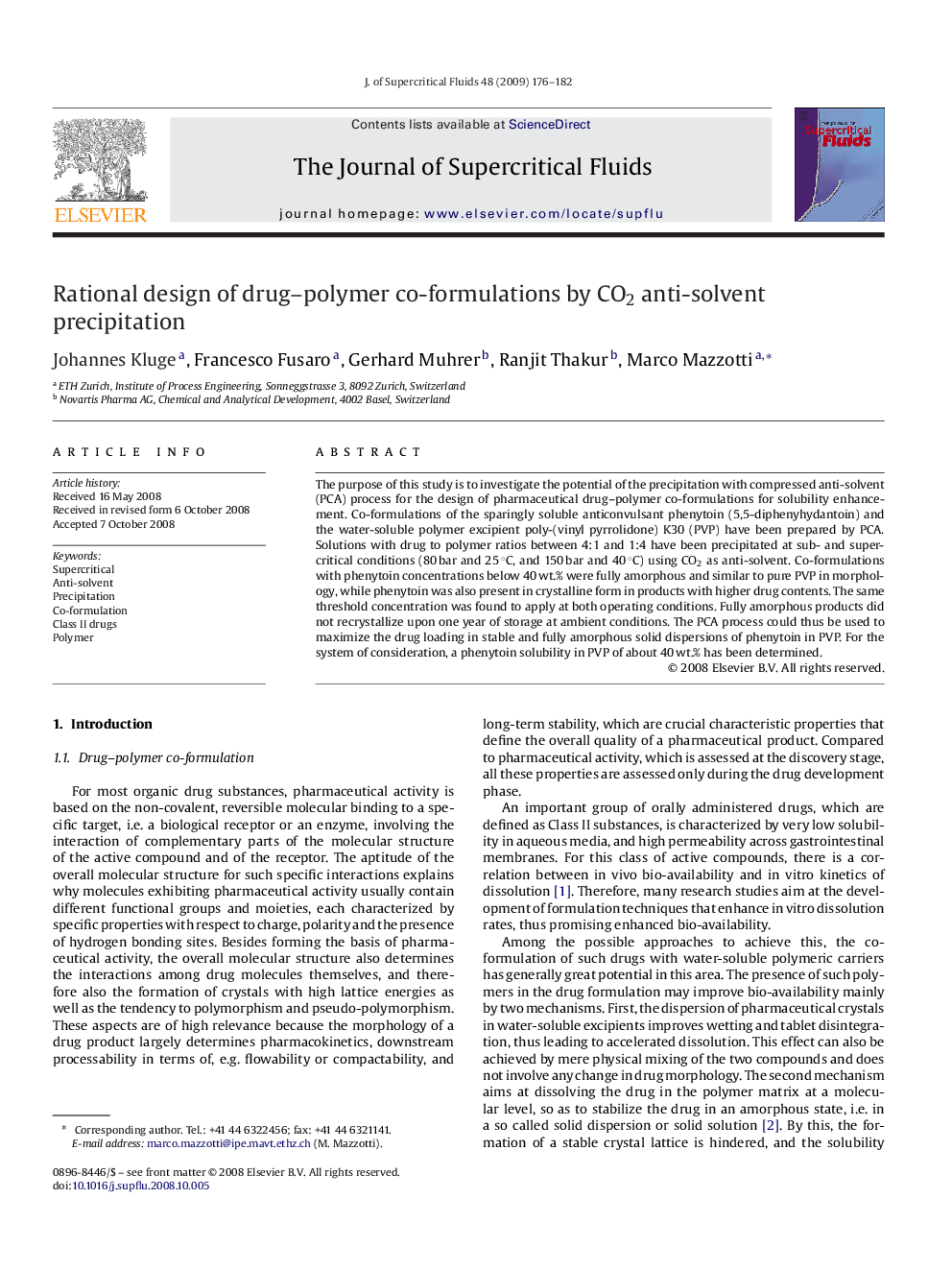| Article ID | Journal | Published Year | Pages | File Type |
|---|---|---|---|---|
| 231687 | The Journal of Supercritical Fluids | 2009 | 7 Pages |
The purpose of this study is to investigate the potential of the precipitation with compressed anti-solvent (PCA) process for the design of pharmaceutical drug–polymer co-formulations for solubility enhancement. Co-formulations of the sparingly soluble anticonvulsant phenytoin (5,5-diphenyhydantoin) and the water-soluble polymer excipient poly-(vinyl pyrrolidone) K30 (PVP) have been prepared by PCA. Solutions with drug to polymer ratios between 4:1 and 1:4 have been precipitated at sub- and supercritical conditions (80 bar and 25 °C, and 150 bar and 40 °C) using CO2 as anti-solvent. Co-formulations with phenytoin concentrations below 40 wt.% were fully amorphous and similar to pure PVP in morphology, while phenytoin was also present in crystalline form in products with higher drug contents. The same threshold concentration was found to apply at both operating conditions. Fully amorphous products did not recrystallize upon one year of storage at ambient conditions. The PCA process could thus be used to maximize the drug loading in stable and fully amorphous solid dispersions of phenytoin in PVP. For the system of consideration, a phenytoin solubility in PVP of about 40 wt.% has been determined.
Graphical abstractThe purpose of this study is to investigate the potential of the precipitation with compressed anti-solvent (PCA) process for the design of pharmaceutical drug–polymer co-formulations for solubility enhancement. Co-formulations of the sparingly soluble anticonvulsant phenytoin (5,5-diphenyhydantoin) and the water-soluble polymer excipient poly-(vinyl pyrrolidone) (PVP K30) have been prepared by PCA. Solutions with drug to polymer ratios between 4:1 and 1:4 have been precipitated at sub- and supercritical conditions (80 bar and 25 °C, and 150 bar and 40 °C) using CO2 as anti-solvent. Co-formulations with phenytoin concentrations below 40 wt.% were fully amorphous and similar to pure PVP in morphology, while phenytoin was also present in crystalline form in products with higher drug contents. The same threshold concentration was found to apply at both operating conditions. Fully amorphous products did not recrystallize upon one year of storage at ambient conditions. The PCA process could thus be used to maximize the drug loading in stable and fully amorphous solid dispersions of phenytoin in PVP. For the system of consideration, a phenytoin solubility in PVP of about 40 wt.% has been determined. Figure optionsDownload full-size imageDownload as PowerPoint slide
